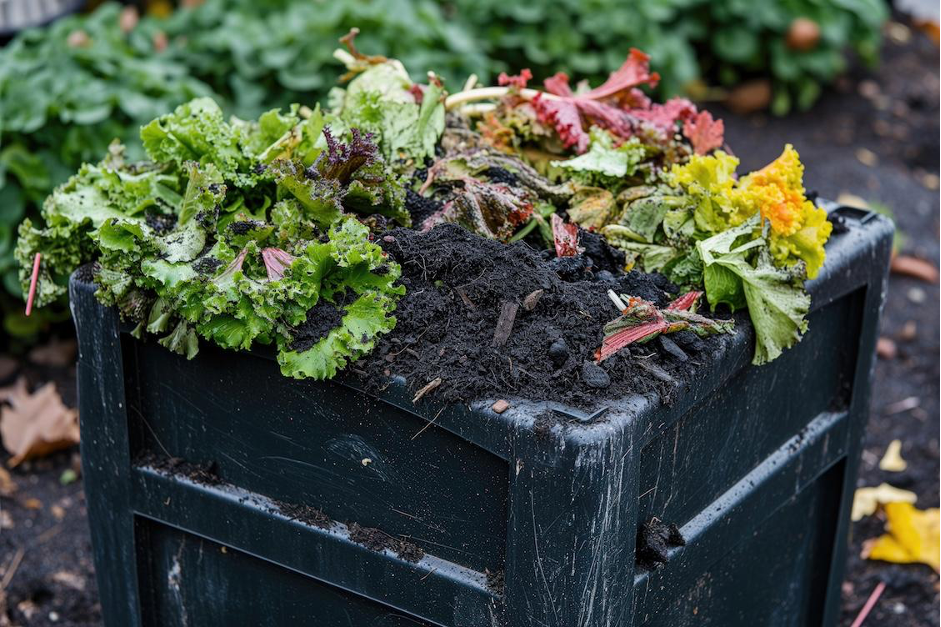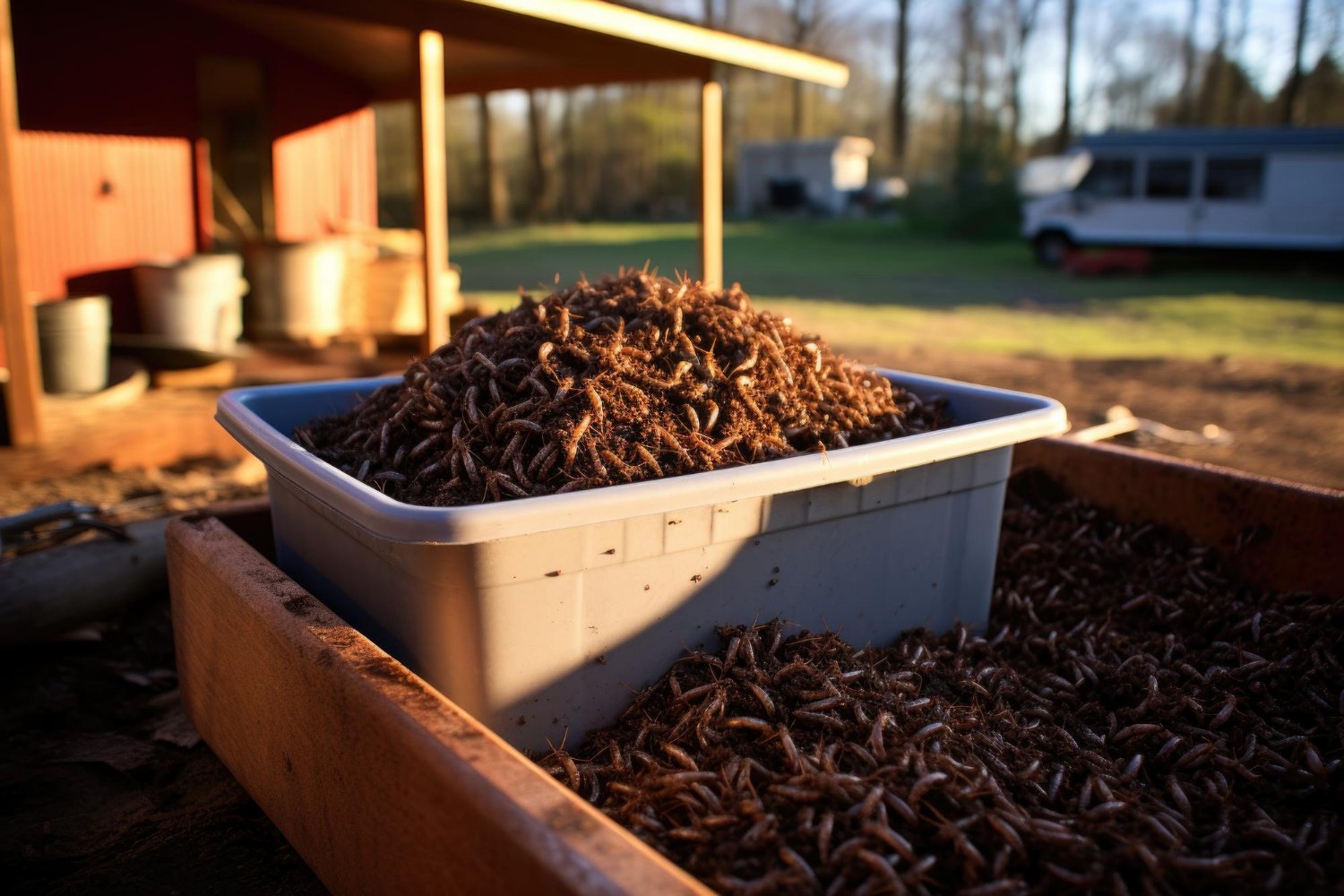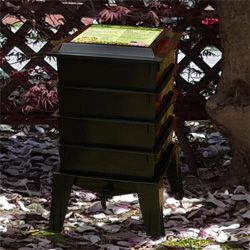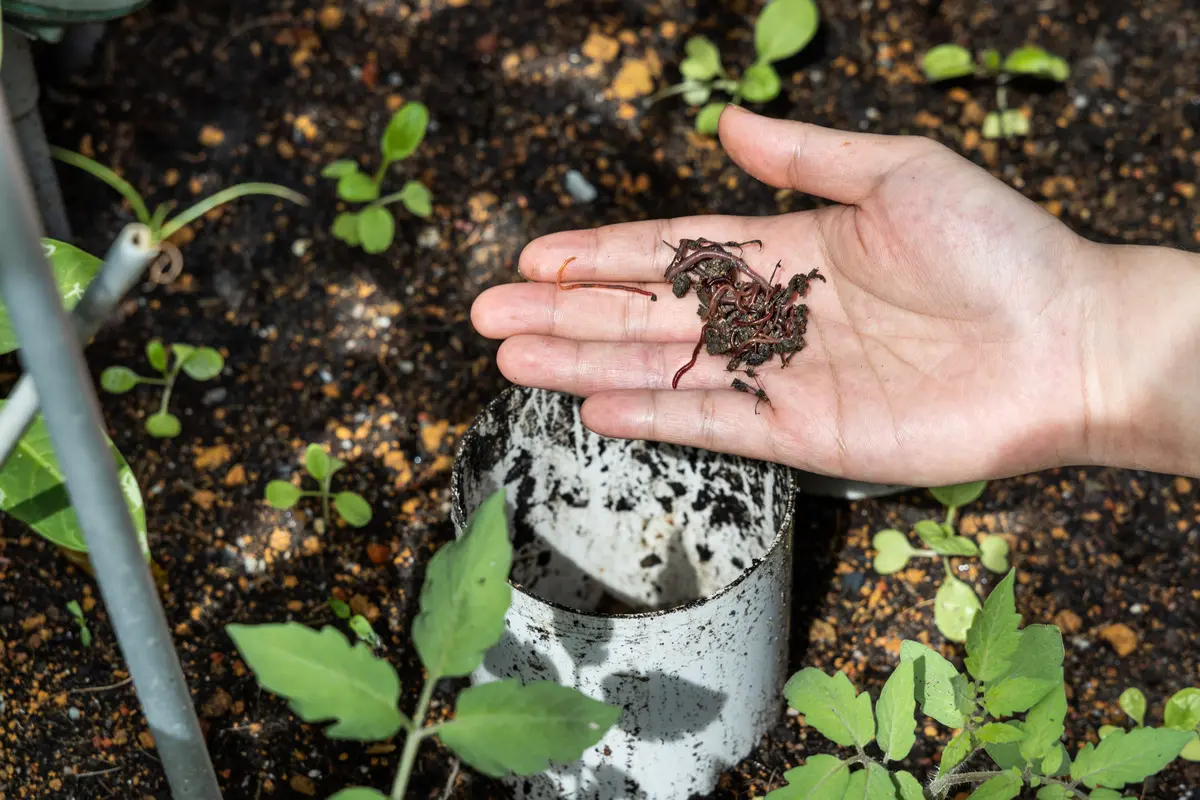The ancient practice of worm farming techniques, dating back centuries, is more than just turning kitchen scraps into garden gold; it’s becoming a cornerstone of sustainable living.
With over 6,000 species of earthworms worldwide, these tiny workers play a crucial role in enhancing soil structure, nutrient cycling, and plant growth.

As the global focus shifts towards sustainability, the importance of worm farming in reducing waste, lowering greenhouse gas emissions, and promoting organic agriculture is skyrocketing. This article will explore some of the most exciting worm farming techniques, from space-saving stackable bins to cutting-edge smart monitoring technologies. We’ll also delve into how integrating worm farming techniques can lead to healthier, more resilient gardens.
1. Stackable Worm Bins
Stackable worm bins are a game-changer in the world of vermiculture, acting much like high-rise condos for our wriggly earth movers. Here’s the scoop: each layer or “tray” of the bin is filled with bedding and organic waste, creating multiple levels of composting heaven. As the worms finish dining on the decomposing scraps in one tray, they naturally migrate upwards to the next feast, leaving behind their nutrient-rich castings.
This ingenious design not only maximizes vertical space, making it perfect for small gardens or balconies, but it also simplifies the harvesting process. Instead of digging through soil to separate worms from their castings, you simply remove the tray at the bottom, which by then, contains beautifully processed compost.
The stackable system keeps the party moving upward, ensuring a continuous cycle of feeding, composting, and harvesting. It’s a win-win: your worms get a varied diet and fresh living quarters, and you get a steady supply of the finest compost without any hassle.
2. Flow-Through Systems

The flow-through system is a marvel in the world of vermiculture, designed to streamline the process of collecting worm castings. Here’s how it works: at the heart of this system is a vertically oriented bin or tower, where you feed your worms kitchen scraps, paper waste, and other compostables at the top layer. Over time, as these hardworking little decomposers process the waste, they naturally move upwards towards fresh food sources, leaving their nutrient-rich castings behind.
Beneath this bustling ecosystem of worms and decomposing organic matter is a cleverly designed harvesting mechanism. It often consists of a bar or grate that can be cranked or moved to sift through the compost, allowing the finished castings to fall through to a collection area at the bottom, all without disturbing the worms. This means you can simply pull out the ready-to-use compost from the bottom of the system periodically, without the need to manually sort through the bin to separate worms from their castings.
The beauty of the flow-through system lies in its efficiency and the high-quality vermicompost it produces, often more refined and uniform than that from traditional bin methods. It’s a set-it-and-forget-it approach that not only saves your back from the heavy lifting but also provides a continuous supply of the best possible nutrition for your plants. This system is a win-win for both the worms, which enjoy an uninterrupted feast, and gardeners, who reap the benefits of their labor in the form of black gold for their gardens.
3. Vermicompost Tea
Brewing vermicompost tea involves a simple yet ingenious process that transforms solid worm castings into a potent liquid fertilizer, akin to a superfood smoothie for your plants. Here’s the scoop on how this magic potion comes to life:
- Starting with the Basics: The process begins with vermicompost, which is the nutrient-rich end product of the decomposition of organic material by worms. This compost is teeming with beneficial microorganisms, nutrients, and enzymes that are great for plant health.
- The Brewing Process: To make vermicompost tea, you take a portion of this vermicompost and steep it in water, much like brewing a giant cup of tea. However, there’s a twist; to maximize the benefits, the mixture is aerated with a simple air pump. This aeration encourages the growth and multiplication of beneficial bacteria and fungi by pumping oxygen into the water.
- Straining the Goodness: After brewing for a set period, typically 24 to 48 hours, the liquid is strained to remove any solid particles. What you’re left with is a dark, nutrient-rich tea that’s ready to be used as a liquid fertilizer.
- Application: Vermicompost tea can be applied directly to the soil around plants or used as a foliar spray. The nutrients and beneficial microbes in the tea help to improve soil structure, increase nutrient availability, and enhance plant growth. It also helps in suppressing plant diseases and pests due to the beneficial organisms it introduces to the plant’s foliage and root system.
Brewing vermicompost tea is a fantastic way to boost your garden’s productivity and health organically. It’s also a sustainable gardening practice that supports a healthy ecosystem in your own backyard. More on how to brew this yummy plant booster here.
4. Smart Monitoring Technologies
Worm farming is stepping into the future with some pretty nifty gadgets that would make even a tech enthusiast’s heart skip a beat! Imagine turning your worm bin into a high-tech hub, where every little condition is monitored to keep your squiggly friends happy and thriving. Here’s how this cool tech works to create a worm paradise:
- Smart Sensors Galore: These aren’t your average gadgets. We’re talking about smart sensors that can measure moisture levels, temperature, pH, and even the oxygen levels in your worm bin. It’s like having a mini weather station focused entirely on creating the perfect environment for your worms.
- Real-Time Alerts: With these smart monitoring technologies, you can get updates straight to your phone or computer. Is your worm bin getting too dry or too hot? You’ll know instantly, thanks to real-time alerts. It’s like your worms are sending you a text message saying, “Hey, could use a bit of cooling down here!”
- Optimal Conditions on Autopilot: These gadgets can help you adjust conditions without you having to lift a finger. Need to increase moisture? A smart system can trigger a mister. Too cold? It can kickstart a heating pad. It’s all about keeping the conditions just right, automatically.
- Data, Data, Data: By tracking the conditions in your worm bin over time, these smart technologies can give you insights into what works best. You’ll start to see patterns and learn exactly what your worms love. It’s like being a worm detective, piecing together clues to solve the mystery of the perfect composting conditions.
This high-tech approach to worm farming is not just about making things easier (although it definitely does that). It’s about getting to know your worms and their environment on a whole new level, ensuring they’re as happy and productive as possible. If you want to know more about the latest worm-tech, check out this article.
Wrapping It Up with a Bow
At Uncle Jim’s, we’re on a mission to make worm farming the next big thing in your backyard (or even your balcony). Whether you’re eyeing some live worms, dreaming of your first compost bin, or just curious about the green life, our door is always open. By embracing these worm farming innovations, you’re not just growing plants; you’re growing a greener future. So, let’s keep the soil alive, the plants happy, and our planet a little bit healthier, one worm at a time. Ready to join the fun?








